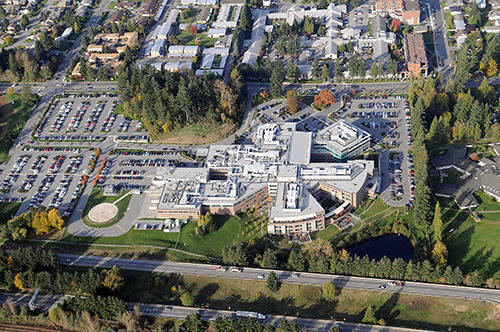The entire British Columbia hospital system has been operating over capacity since 2012, according to Ministry of Health figures obtained by The Abbotsford News.
But not all patients need to be in hospital: one of every seven hospital beds in B.C. are occupied by people who could otherwise be discharged but are waiting for some additional care to be set up elsewhere.
The figures date back to 2012/13 and were acquired after The News filed a Freedom of Information request following a series of high-profile incidents involving the Abbotsford Regional Hospital (ARH) emergency room. In at least two cases, patients who were sent home from the ER later died. Two experts who spoke to The News in March said that while those incidents can’t be linked to over-crowding, congestion in ERs increases the risk of doctor error and negative patient outcomes.
The figures include four years of data, along with the first three quarters of the 2016/17 fiscal year. They are for acute care capacity, which is separate from emergency department capacity – although some ER congestion issues are linked to a lack of beds available elsewhere in the hospital. (In many of the province’s emergency rooms, patients frequently wait longer than 10 hours for beds to be freed up in acute care spaces.)
Since 2012, the province’s hospitals have operated between 102 and 104 per cent capacity. Only the Provincial Health Service Authority, which operates B.C.’s children’s and women’s hospitals, has not operated over capacity in multiple years. And regions that once operated below 100 per cent are now regularly over capacity.
The Fraser Health Authority, which manages ARH and other hospitals between Hope and White Rock, has operated over 100 per cent since 2012/13. Last year, its occupancy rate was 104.5 per cent, according to the province, although the health authority says occupancy was at 101 per cent. Spokesperson Tasleem Juma said Fraser Health counts bed occupancy by the part day rather than the full day.
Juma said that’s a decrease from the previous year and credited increased home health care, improved supports for discharged patients, and more residential care spaces as making a difference.
“There is no one factor responsible for hospital occupancy rates,” she said in an emailed statement. “It is a complex issue that hospitals across the province, and country, are confronted with and a function of a growing demand for services.”
The numbers suggest it and other health authorities across B.C. have been unable to create enough out-of-hospital supports for patients who could be discharged.
In the 2016/17 fiscal year, the province’s hospitals operated at 102.2 per cent capacity. That rate falls to 88 per cent, with every health authority operating under capacity, if only patients who must stay in hospital are counted. However, many hospital beds are tied up by patients waiting for care elsewhere that isn’t yet available. That can include homeless people who can’t go back to living on the streets, seniors who need a residential care bed, or those who are able to go home but are waiting for supports to be set up.
The figures show more than one in seven hospital beds in B.C. are filled by such “alternate level of care” patients awaiting care elsewhere. And they suggest the province and its health authorities have not been able to catch up to the ongoing demand for out-of-hospital care.
Fraser Health opened some 400 residential care beds last year. But the number of beds for every 1,000 seniors is well below where it was five years ago. Other documents show the number of beds in the Fraser East region grew by just 65, or three per cent, between 2013 and 2016. During that time span, the number of seniors older than 75 in the region jumped by 10 per cent. To just keep up with the aging population, around 200 residential beds would have to be coming online each year in the Fraser East region alone.
The occupancy numbers from the first three quarters of last year are close to identical to those from 2012/13.
Indeed, the most evident shift from four years ago is that the over-capacity issues in Fraser Health and Interior Health in 2012/13 have spread to Vancouver Island and Northern health authorities. Hospitals in those two regions were under capacity in 2012/13 and 2013/14, but have operated over capacity ever since. Aside from hospitals administered by the PHSA, which do not hold ALC patients, only the Vancouver Coastal Health Authority has seen some notable success; occupancy rates in that area dipped below 100 per cent in 2016/17, and the health region also recorded the lowest proportion of beds dedicated to ALC patients.
On Twitter: @ty_olsen
Email: tolsen@abbynews.com
